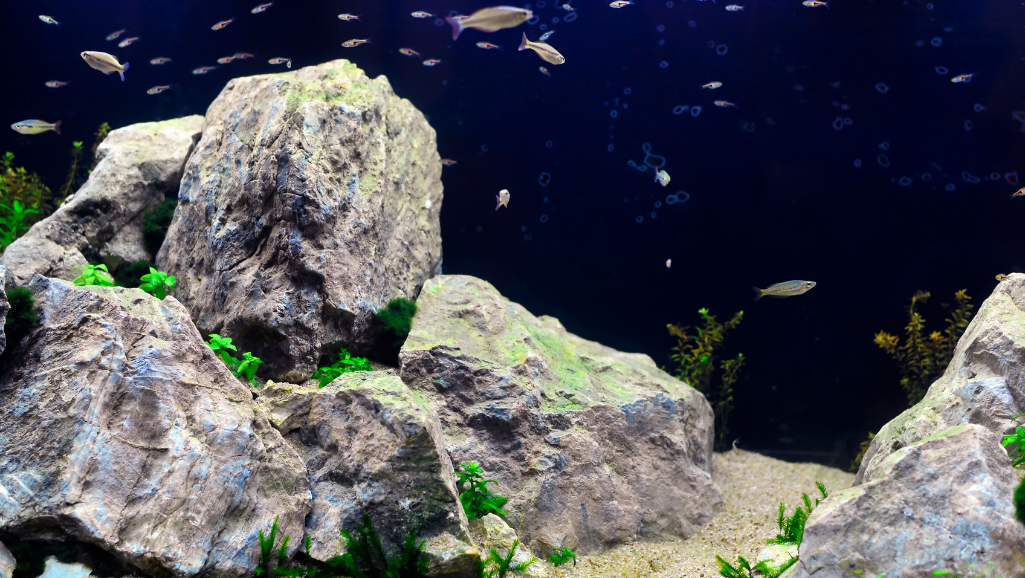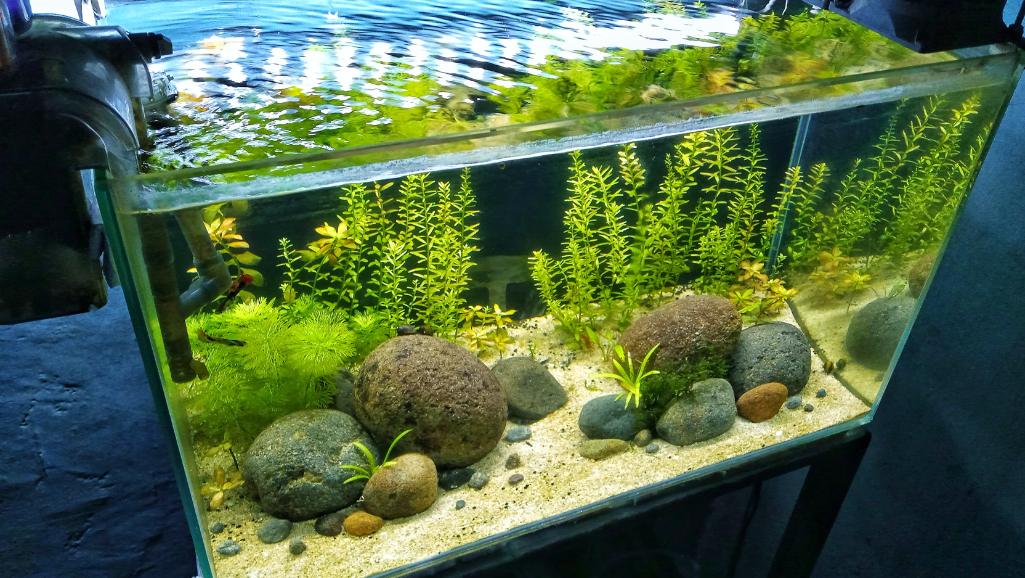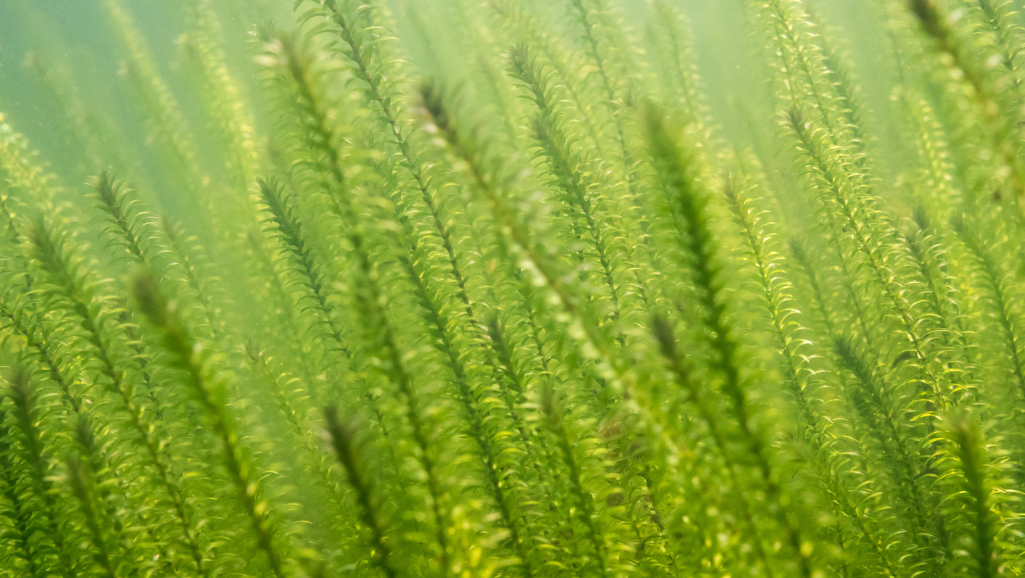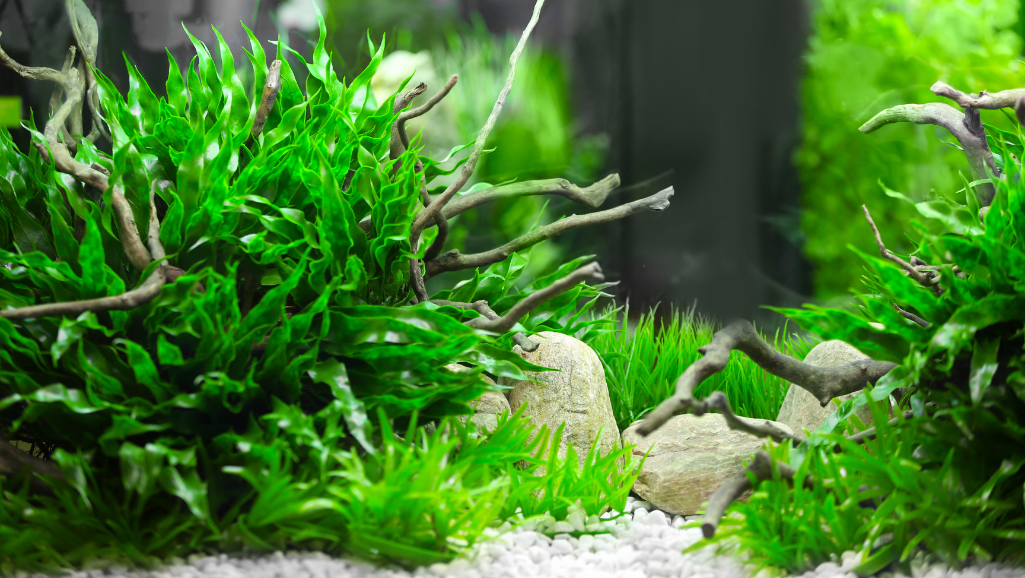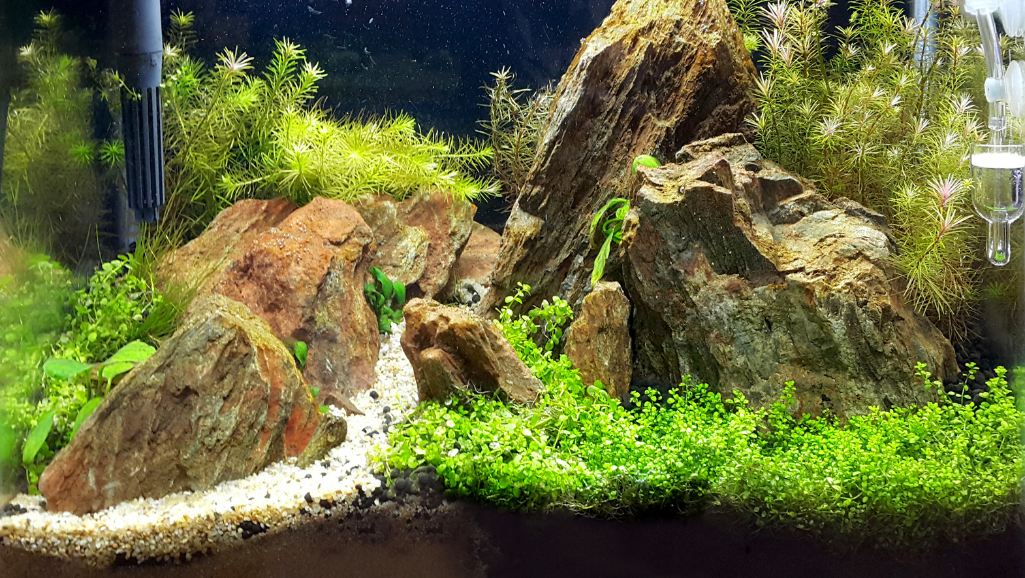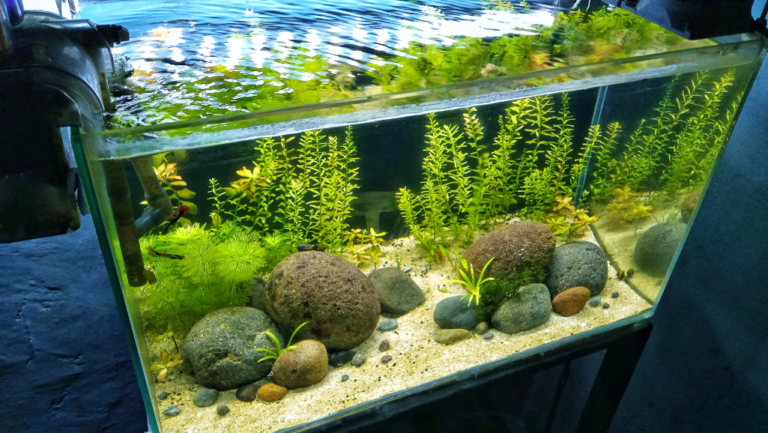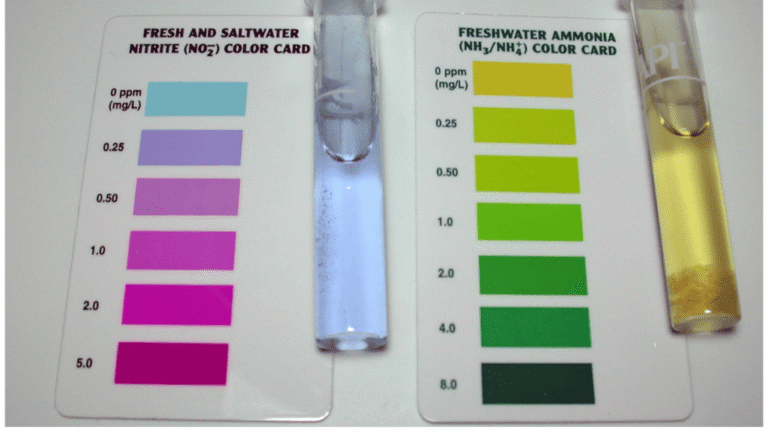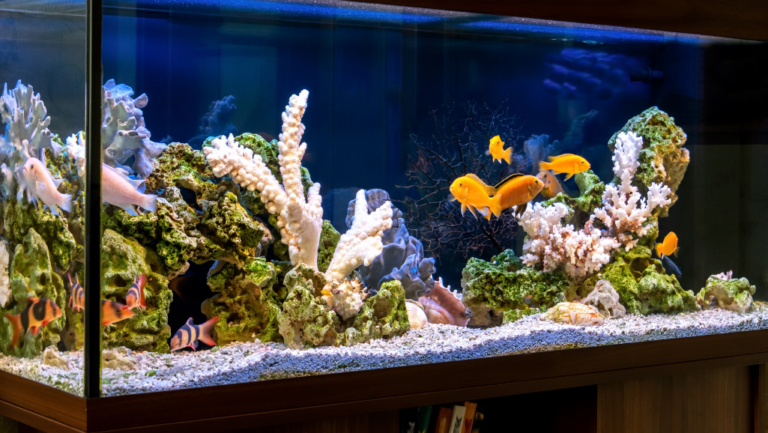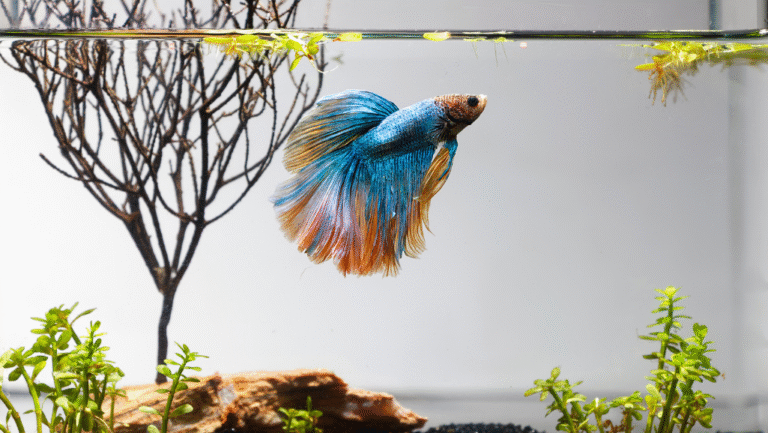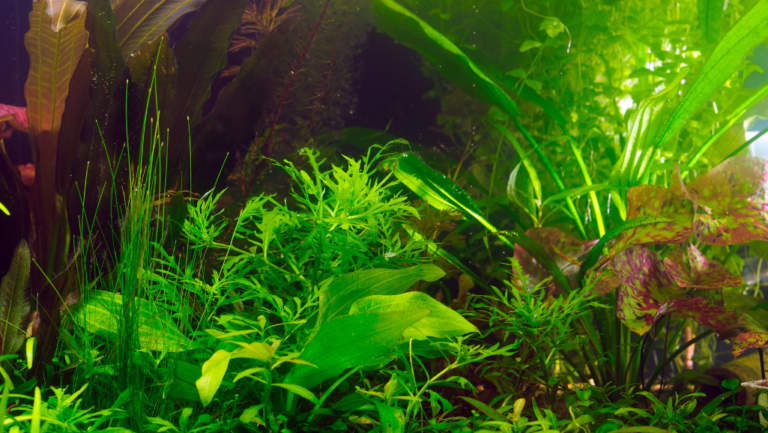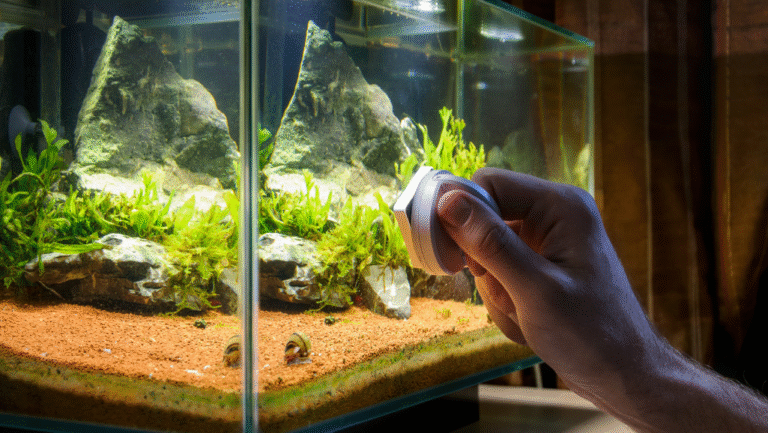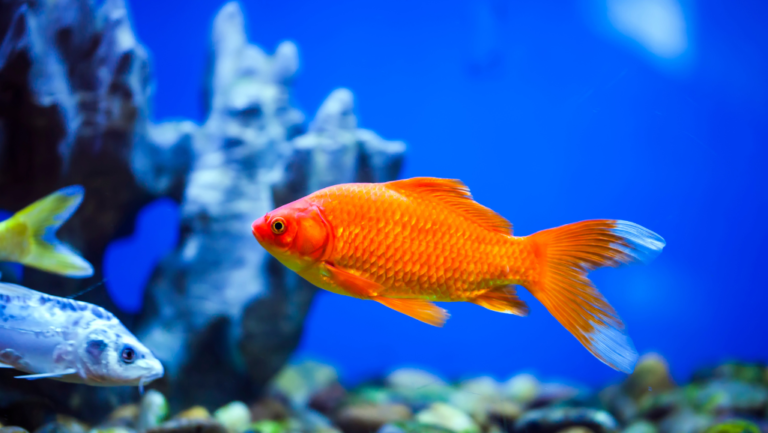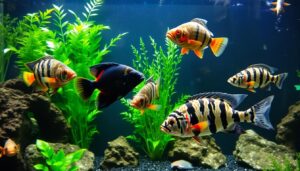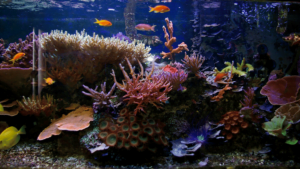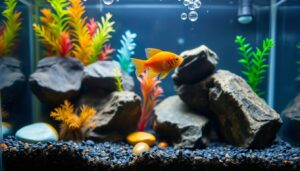Creating a stunning underwater garden is an art form that combines creativity and precision. The Dutch style of aquascaping, originating in the 1930s, has become a timeless method for designing breathtaking aquariums. This approach focuses on lush, healthy plants arranged in meticulous groupings to create a visually striking display.
Rooted in the Netherlands, this style emphasizes the health and vibrancy of aquatic plants. By carefully selecting and arranging different species, you can achieve a balanced and harmonious look. The focal point of the design often features bold, colorful plants that draw the eye and add depth to the layout.
Beyond aesthetics, a well-designed aquarium also promotes a healthy ecosystem. This guide will walk you through the essentials, from equipment and layout techniques to plant selection and maintenance. Whether you’re a beginner or an experienced hobbyist, mastering the Dutch Aquascape style can transform your aquarium into a living masterpiece.
Key Takeaways
- Dutch aquascaping focuses on lush, healthy plants and meticulous grouping.
- Originating in the 1930s, this style has a rich history and refined techniques.
- Creating a focal point with bold plants enhances visual appeal.
- A balanced aquarium promotes both aesthetics and a healthy ecosystem.
- This guide covers essential topics like equipment, layout, and plant care.
Introduction to Dutch Aquascaping and Aquarium Design
A lush aquarium is more than just a tank; it’s a living masterpiece of plant arrangement. This style focuses on creating a vibrant underwater garden where plants take center stage. Unlike other designs that rely on rocks or driftwood, this approach emphasizes the beauty of aquatic plants arranged in meticulous groups.
What is Dutch Aquascaping?
This style is defined by its detailed plant grouping and layout. Instead of using hardscapes like stones or wood, the focus is entirely on the plants. Each group is carefully chosen and placed to create a harmonious and balanced look. This method allows the plants to become the central design element, transforming the aquarium into a lush, green paradise.
The unique aesthetic of this style sets it apart from other aquascaping methods. By removing traditional hardscapes, the plants are given full attention, creating a striking visual impact. The result is a tank that feels like a natural underwater garden, filled with vibrant colors and textures.
Benefits of a Lush Underwater Garden
Cultivating a lush underwater garden offers more than just visual appeal. It promotes natural growth and maintains a healthy ecological balance. Plants work together in groups, creating harmony and contrast throughout the aquarium. This not only enhances the beauty of the tank but also supports a thriving ecosystem.
By focusing on plant arrangement, this style encourages creativity and precision. Each plant group is carefully selected to complement the others, resulting in a cohesive and stunning design. Whether you’re a beginner or an experienced hobbyist, this approach offers endless possibilities for creating a breathtaking underwater world.
History and Evolution of the Dutch Aquascape Style
The art of designing underwater landscapes has a rich history that dates back to the 1930s. This unique approach, rooted in the Netherlands, emphasizes lush plant arrangements and meticulous design. Over the decades, it has evolved into a refined method that continues to inspire hobbyists worldwide.
Origins and Early Pioneers
In the 1930s, the Dutch Society for Aquarists (NBAT) played a pivotal role in shaping this style. Early pioneers focused on creating vibrant underwater gardens using carefully selected plant species. Their goal was to achieve a harmonious balance that highlighted the natural beauty of aquatic plants.
The NBAT introduced guidelines to maintain the purity of this style. These rules emphasized the importance of grouping plants and avoiding excessive hardscapes. This approach allowed the plants to take center stage, creating a striking visual point in every aquarium.
Milestones and Changing Trends
Over the years, this style has seen significant milestones. The introduction of advanced CO₂ systems in the 1960s revolutionized plant growth, enabling hobbyists to cultivate more challenging species. Lighting technology also evolved, transitioning from T8 to T5HO fixtures to support higher light requirements.
Trends have shifted to incorporate new techniques and tools. For example, the careful selection of fish and invertebrates has become an essential part of the design process. These additions complement the plant arrangements, enhancing both aesthetics and ecological balance.
Today, this style remains a cornerstone of modern aquarium design. Its continual refinement ensures it stays relevant, offering endless possibilities for creating breathtaking underwater worlds.
Mastering the dutch aquascape: Principles and Techniques
Achieving depth and contrast in an aquarium is both a science and an art. The key lies in mastering the principles of plant grouping and strategic placement. By focusing on these techniques, you can create a dynamic, multi-layered composition that captivates the eye.
Core Principles of Plant Grouping
Grouping aquatic plants is essential for building a visually appealing layout. Start by selecting stem plants that vary in height and texture. Place taller plants in the background and shorter ones in the foreground to create a sense of depth.
To avoid monotony, balance contrast within dense groupings. Combine plants with different leaf shapes and colors. For example, pair broad-leafed species with fine-textured ones to add visual interest.
While rocks can be used, they should be minimized or placed subtly. Their role is to support the natural layout without overshadowing the plants. This approach keeps the focus on the lush greenery.
Strategic Placement of Stem Plants
Stem plants are a cornerstone of this style. Their vertical growth helps establish depth and structure. Arrange them in clusters, leaving space between groups to enhance distinction and allow for growth.
Midground plants should be one-third to half the height of the tank. This placement creates a seamless transition between the foreground and background, adding to the overall harmony.
Balancing Contrast and Harmony
Contrast is vital for a striking design. Avoid symmetry and ensure each plant group stands out. Use the “20-foot Squint Eye Test” to assess visual distinction from a distance. This technique ensures clarity and balance in your layout.
Continuous trimming is crucial to maintain the intended design. Regular pruning prevents overcrowding and keeps the arrangement looking sharp and organized.
By following these principles, you can transform your aquarium into a breathtaking underwater garden. Focus on depth, contrast, and careful organization to achieve a cohesive and stunning design.
Selecting the Right Plants for a Lush Underwater Garden
Designing a lush underwater garden starts with selecting the right plants for your layout. The key to success lies in choosing plant species that thrive densely and complement each other. By focusing on high-density planting and strategic grouping, you can create a vibrant and balanced aquarium.
High-Density Planting Strategies
High-density planting is essential for achieving a lush and vibrant look. Start by selecting fast-growing stem plants like Rotala rotundifolia or Hygrophila polysperma. These species grow quickly and densely, providing a rich backdrop for your aquarium.
Arrange plants in clusters to create distinct groupings. This approach enhances the layout and ensures each species stands out. Use taller plants in the background and shorter ones in the foreground to add depth and texture.
Regular trimming is crucial to maintain density and prevent overcrowding. Prune fast-growing plants to encourage bushier growth and keep the arrangement looking sharp.
Choosing Focal and Accent Species
Focal and accent plants play a vital role in defining the layout. Choose bold species like Cryptocoryne wendtii or Anubias barteri var. nana to create striking visual points. These plants add contrast and draw the eye to key areas of the tank.
For accents, consider rosette forms like Echinodorus tenellus or Glossostigma elatinoides. These species add texture and fill gaps between larger groupings. Their vibrant colors and unique shapes enhance the overall aesthetic.
Balance is key when selecting plants. Avoid overcrowding by limiting the number of focal species and ensuring each group has enough space to thrive. This approach ensures a lush and captivating display.
For more insights on creating stunning underwater gardens, explore this detailed guide on plant arrangement and design techniques.
Creating Depth and Contrast with Terracing Techniques
Transforming your aquarium into a multi-dimensional masterpiece requires strategic design techniques. One of the most effective methods is terracing, which creates a stepped, layered effect. This approach enhances visual depth and adds a dynamic quality to your underwater garden.
Terracing involves manipulating the substrate to form elevated areas and slopes. By varying the height of the substrate, you can create distinct levels for plant placement. This technique not only adds dimension but also supports healthy growth by allowing roots to spread naturally.
Implementing the Rule of Thirds
The rule of thirds is a fundamental principle in aquascaping. It involves dividing the tank into nine equal parts using two horizontal and two vertical lines. Positioning key elements at the intersections creates a balanced yet dynamic composition.
For example, place taller plants in the background and shorter ones in the foreground. This arrangement emphasizes depth and draws the viewer’s eye to focal points. The rule of thirds ensures your design feels harmonious and visually appealing.
Substrate variations play a crucial role in enhancing depth. Use finer gravel in the foreground and coarser materials in the background. This contrast mimics natural landscapes and accentuates the layered appearance of your aquarium.
Managing plant height is essential for maintaining a cohesive design. Regularly trim fast-growing species to prevent overcrowding and ensure each layer remains distinct. For more tips on creating stunning layouts, explore this guide on freshwater tank ideas.
By combining terracing, the rule of thirds, and strategic plant placement, you can achieve a breathtaking underwater garden. These techniques not only enhance aesthetics but also promote a thriving ecosystem.
Designing with Color, Texture, and Focal Points
Crafting a vibrant underwater scene involves mastering the interplay of color, texture, and focal points. These elements work together to create a visually stunning and balanced aquarium. By understanding how to use them effectively, you can transform your tank into a captivating underwater garden.
Effective Use of Red and Dark Green Plants
Red and dark green plants are essential for creating contrast and depth. Their bold colors naturally draw the eye, making them ideal focal points. For example, Ludwigia repens and Cryptocoryne wendtii add striking accents to any layout.
When using these plants, follow the rule of balance. Avoid overloading one area with too much red or green. Instead, distribute them evenly to maintain harmony. This technique ensures your aquarium remains visually appealing without overwhelming the viewer.
Creating Visual Streets
A plant street is a pathway of plants that guides the eye through the tank. This technique involves arranging plants in a linear pattern, creating a sense of movement and direction. Use taller plants in the background and shorter ones in the foreground to enhance the effect.
For example, Rotala rotundifolia can form a vibrant green street, while Echinodorus tenellus adds texture to the foreground. This approach not only adds depth but also keeps the viewer engaged as their eye travels through the design.
Combining Sizes and Textures
Balancing plant sizes and textures is key to a cohesive design. Pair broad-leafed species like Anubias with fine-textured plants like Hemianthus callitrichoides. This contrast adds visual interest and prevents monotony.
Use the rule of thirds to position these elements strategically. Place focal plants at the intersections of imaginary lines dividing the tank. This technique ensures a balanced and harmonious layout.
Practical Tips for a Harmonious Layout
Avoid overusing any one color or element. Too much red can overpower the design, while too much green may lack contrast. Regularly trim fast-growing plants to maintain the intended structure.
Test your layout from a distance using the “20-foot Squint Eye Test.” This technique helps ensure clarity and balance in your design. By following these tips, you can create a visually stunning aquarium that captivates the eye and promotes a healthy ecosystem.
Essential Equipment and Maintenance for a Dutch Aquascape
Maintaining a thriving underwater garden requires the right tools and consistent care. The choice of equipment plays a critical role in ensuring healthy plant growth and vibrant aesthetics. From lighting to filtration, each component must work together to create a balanced ecosystem.
Lighting, CO₂, and Filtration Systems
Proper lighting is essential for photosynthesis and plant health. Opt for T5 or LED fixtures with a level of 2-4 watts per gallon. This ensures even illumination and supports the growth of diverse plant species.
CO₂ injection systems are another key component. Maintaining a level of 20-30 mg/L promotes vigorous growth and prevents nutrient deficiencies. Pair this with a high-quality canister filter to keep water clean and clear.
Filtration systems, such as the Fluval G6, are a practical choice for larger tanks. They ensure efficient water circulation and remove debris, maintaining optimal water quality.
Regular Trimming and Cleaning Practices
Regular maintenance is crucial for a healthy aquarium. Weekly trimming prevents overcrowding and encourages bushier growth. Fast-growing plants like Rotala rotundifolia may require pruning every 7-10 days.
Cleaning routines should include water changes of 10-20% weekly. This helps remove excess nutrients and prevents algae buildup. Use specialized tools like pruning scissors and algae scrapers for precise care.
By following these practices, you can maintain a vibrant and balanced underwater garden. The sense of accomplishment from a well-maintained tank is unmatched.
“A well-designed aquarium is not just about beauty; it’s about creating a thriving ecosystem that supports both plants and aquatic life.”
- Choose lighting systems that provide even illumination and support plant growth.
- Maintain CO₂ levels between 20-30 mg/L for optimal nutrient uptake.
- Invest in a reliable filtration system to ensure water clarity and quality.
- Regular trimming and cleaning prevent overcrowding and debris accumulation.
Incorporating Fish and Invertebrates in Your Aquascape
Adding fish and invertebrates to your underwater garden brings life and movement to the design. These creatures not only enhance the view but also contribute to the ecological balance of the tank. Their presence adds a dynamic texture to the layout, making the aquarium feel more natural and vibrant.
Small schooling fish like Neon Tetras or Cardinal Tetras are excellent choices. Their shimmering colors create a striking contrast against the lush greenery. Peaceful species such as Angelfish or Congo Tetras also blend well with dense plant groupings, adding depth to the view.
Fish play a crucial role in managing algae growth. Species like Otocinclus or Siamese Algae Eaters help keep the tank clean by feeding on unwanted algae. Additionally, their waste contributes to nutrient cycling, promoting healthy plant growth.
When selecting fish, consider their compatibility with the plants. Avoid species that may damage delicate texture or uproot plants. A balanced ecosystem ensures both aquatic life and plants thrive harmoniously.
Invertebrates like shrimp or snails are also valuable additions. They help clean the tank by consuming debris and algae. Their subtle movements add another layer of texture to the aquarium, enhancing its overall appeal.
Maintaining a balance between aquatic life and plant health is essential. Regular monitoring of water quality and nutrient levels ensures a thriving environment. For more insights on creating a balanced ecosystem, explore this detailed guide on plant arrangement and aquatic life integration.
By thoughtfully incorporating fish and invertebrates, you can transform your aquarium into a lively and balanced underwater world. Their presence not only enhances the view but also supports a healthy and thriving ecosystem.
Overcoming Common Challenges in Dutch Aquascaping
Keeping a vibrant underwater garden thriving requires addressing common challenges that can disrupt its balance. From algae outbreaks to nutrient imbalances, these issues can affect the health of your aquatic plants and the overall style aquascape. By understanding these challenges and implementing practical solutions, you can maintain a lush and harmonious aquarium.
Managing Algae Growth
Algae growth is one of the most common issues in densely planted tanks. It can quickly overtake your plant groups, blocking light and nutrients. To control algae, ensure your tank receives the right amount of light—typically 8-10 hours daily. Excessive light can trigger algae blooms, so consider using a timer to regulate exposure.
Introducing algae-eating species like Otocinclus or Siamese Algae Eaters can also help. These creatures naturally reduce algae levels while adding movement to your tank. Regular water changes of 10-20% weekly prevent nutrient buildup, which algae thrive on.
Finally, maintain a balanced fertilization regimen. Over-fertilization can lead to nutrient excess, promoting algae growth. Use a mix of macro and micronutrients, ensuring your aquatic plants remain healthy and competitive.
Balancing Nutrient Levels
Nutrient imbalances can stunt plant growth and affect the color and vibrancy of your aquarium. Start by testing water parameters regularly to monitor levels of nitrogen, phosphorus, and potassium. These nutrients are essential for healthy plant groups, but too much can harm the ecosystem.
Adjust fertilization based on plant response. Fast-growing species like Rotala rotundifolia may require more nutrients, while slower-growing plants need less. A balanced NPK ratio of 10-10-10 is a good starting point for general plant health.
CO₂ levels also play a crucial role. Maintain a concentration of 20-30 mg/L to support vigorous growth. Pair this with proper lighting and filtration to ensure your style aquascape remains vibrant and healthy.
- Monitor light duration and intensity to prevent algae outbreaks.
- Introduce algae-eating species for natural control.
- Test water parameters regularly to maintain nutrient balance.
- Adjust fertilization based on plant growth and needs.
- Maintain CO₂ levels to support healthy aquatic plants.
By addressing these challenges with careful planning and consistent upkeep, you can preserve the beauty and health of your underwater garden. A well-maintained aquarium not only enhances the color and vibrancy of your plant groups but also creates a thriving ecosystem for all its inhabitants.
Tips for Sustainable Practices and Long-Term Aquarium Health
Ensuring the long-term health of your aquarium involves sustainable practices and careful attention to water quality. A well-maintained tank not only looks stunning but also supports a thriving ecosystem for both plants and aquatic life.
Effective Water Quality Management
Maintaining optimal water quality is essential for a healthy aquarium. Regular water changes of 10-20% weekly help remove excess nutrients and replenish essential minerals. This practice prevents algae growth and keeps the environment stable for your plants and fish.
Testing water parameters like pH, ammonia, nitrite, and nitrate levels is crucial. Use reliable test kits to monitor these levels and adjust as needed. Proper filtration systems, such as canister filters, ensure water clarity and remove debris that can affect plant growth.
Sustainable Fertilization and CO₂ Dosing
Balanced fertilization is key to promoting natural plant growth. Use a mix of macro and micronutrients, adjusting based on plant response. Fast-growing species may require more nutrients, while slower-growing plants need less.
CO₂ dosing is another critical factor. Maintain a concentration of 20-30 mg/L to support vigorous growth. Pair this with proper lighting to ensure your plants thrive without promoting algae overgrowth.
Strategic Use of Background Plants
Background plants play a vital role in creating a balanced and stress-free environment. Taller species like Vallisneria or Amazon Swords add depth and provide shelter for fish. Their placement enhances the overall design while contributing to water quality by absorbing excess nutrients.
Regular pruning and trimming of these plants prevent overcrowding and maintain the intended structure. This practice ensures a harmonious layout and supports the health of your aquarium.
Regular Monitoring and Maintenance
Consistent monitoring of water parameters and nutrient levels is essential for long-term stability. Use tools like timers for lights to optimize energy use and reduce costs. Energy-efficient equipment, such as LED lighting, also supports sustainable practices.
For more insights on creating a thriving underwater environment, explore this guide on plants suitable for fish. By following these tips, you can ensure your aquarium remains vibrant and healthy for years to come.
Conclusion
The journey to creating a lush underwater garden is filled with both challenges and rewards. By focusing on core principles like plant grouping, depth, and contrast, you can achieve a balanced and visually stunning aquarium. Careful planning, thoughtful plant selection, and consistent maintenance are key to sustaining a thriving ecosystem.
Balanced aesthetics not only enhance the beauty of your tank but also promote a healthy environment for aquatic life. Sustainable practices, such as proper fertilization and CO₂ dosing, ensure long-term success. For inspiration, explore popular fish tank designs that showcase creativity and innovation.
Apply these insights to your own aquarium and experiment with different layouts and species. With dedication and ongoing learning, you can transform your tank into a captivating underwater paradise. Embrace the process and enjoy the rewards of your efforts.
